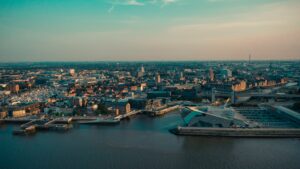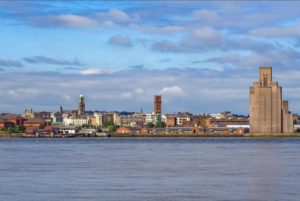 One of the government’s flagship transport policies is to devolve a big chunk of transport spending to groups of businesses and local authorities. One year in, we’ve examined whether these new local transport boards (LTBs) any good at choosing where to invest, or if they are accountable for how they spend public money.
One of the government’s flagship transport policies is to devolve a big chunk of transport spending to groups of businesses and local authorities. One year in, we’ve examined whether these new local transport boards (LTBs) any good at choosing where to invest, or if they are accountable for how they spend public money.
Last month, Campaign for Better Transport and Campaign to Protect Rural England published Where the money’s going – Are the new local transport bodies heading in the right direction? This was the first assessment of how the LTBs are allocating their collective £1.3bn budget.
We were looking for signs that the LTBs had assessed need, sought local opinion and planned strategically. The results of our research are worrying. While some LTBs have looked for new ideas and funded projects to tackle real transport problems, the majority appear behind the times, having simply reheated lists of road projects behind closed doors.
The most damning finding from the research is that, for most LTBs, investing in transport means building more roads to support more cars and more lorries. Of the 210 transport projects proposed across England, more than half (123) deal solely with new road capacity and a further 29 provide new roads with support for other modes, such as bus lanes. Out of 38 LTBs, eight are planning only road-building projects, while just 12 have objectives that include social or environmental aims.
From a regeneration perspective, spending £710m on new road capacity runs counter to the experience of what makes for thriving places. Decades of evidence have shown that adding road capacity can worsen rather than solve local traffic problems and similarly can weaken rather than strengthen local economies. New link and ring roads can attract new developments onto greenfield and out of town sites, weakening the vitality of local high streets.
Furthermore, cities like Cambridge, York and Norwich have among the lowest number of empty shops in country. Their setting and feel allow them to compete with out-of-town complexes and online shopping. They have invested in the public realm including safe and attractive pedestrianised areas. They give people choice about how get around through effective and efficient public transport, park & ride, and decent facilities for those on foot and bike.
While there are some schemes to support public transport, just 6 of the 210 LTB projects include walking or public realm improvements. There are no projects solely to support cycling. Worse, few of the LTBs sought public views or offered appropriate accountability. Only 12 LTBs clearly invited public comments on transport priorities. The worst were Oxfordshire, Buckinghamshire and Tees Valley who carried out no public consultation, restricted funding to a narrow number of schemes (in the case of Tees Valley to only road-building schemes), or simply allocated money to pre-existing road schemes already in the planning process. The UK is one of the most car dependent and congested countries in the whole of Europe. Prioritising additional expensive roads will not help tackle this.
Others did much better. Our research ranks the 38 LTBs according to scheme choice, sustainability and transparency. The best LBTs were Gloucestershire, Coventry & Warwickshire and Greater Birmingham & Solihull who considered a wide range of schemes, prioritised sustainability and consulted the public in a democratic and transparent way.
Gloucestershire took the unusual step of issuing a public call for scheme ideas. The results were priorities to improve or add bus lanes on the A40 into Cheltenham (proposed by Stagecoach) and the redevelopment of Cheltenham Spa railway station. There are also reserve projects to promote active travel and better public health in an area of Lydney suffering relatively high rates of obesity and even a project to bring a section of canal back into use in Stroud. Key to the selection of a more imaginative programme seems to be the ‘crowd sourced’ way scheme proposals were sought, with proposers not restricted to local authorities.
It is from these LTBs like Gloucestershire that lessons need to be learnt. We need to think beyond road building, do more to find out what local people need and consider wider objectives, such as public health or the vitality of town centres when making decisions. Genuinely identifying and tackling transport problems must start from seeking out a wide range of potential schemes, setting broader goals that support real sustainable development, including public health, town centre regeneration, public and open spaces, heritage and reducing carbon emissions. In the meantime, the worst proposals should be returned to the LTB for further consideration by the Department for Transport.
LTBs need to work with local communities to prioritise what is really needed in their local area – this may be some new road capacity but it should not be the only option available. While much of the report makes depressing reading, there are some fantastic examples in there of innovative LTBs who have listened to local views and are now proposing to transform how people can get around in the future.

















We have been thinking a lot recently about the challenges of engaging local people in thinking about better transport infrastructure when often, in our experience, these conversations can be quite superficial and the response you get depends very much on what/ how you ask. We are used to going into projects where highways teams expect the response from business owners and residents to be ‘improve parking and road capacity’ and that ‘pedestrianisation will kill our business’. The challenge is to get beyond this and think more holistically about supporting alternative travel modes, or even just prototype things using temporary road or lane closures. Building that type of relationship takes time and that costs money so I would question if that time is being given regularly enough.
We consider what we do to be about preparing the ground for a big paradigm shift away from car use and this means we need to put the time in and really embed ourselves in an area. I can imagine that a quick surface level piece of engagement might get you the feedback that more road capacity is the priority rather than being able to begin to chip away at the cynicism about anything other than car use being viable.
To get to the place we want to be taking some inspiration from Enrique Peñalosa, Mayor of Bogota might not be amiss.